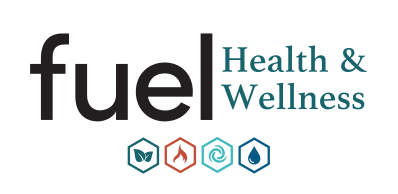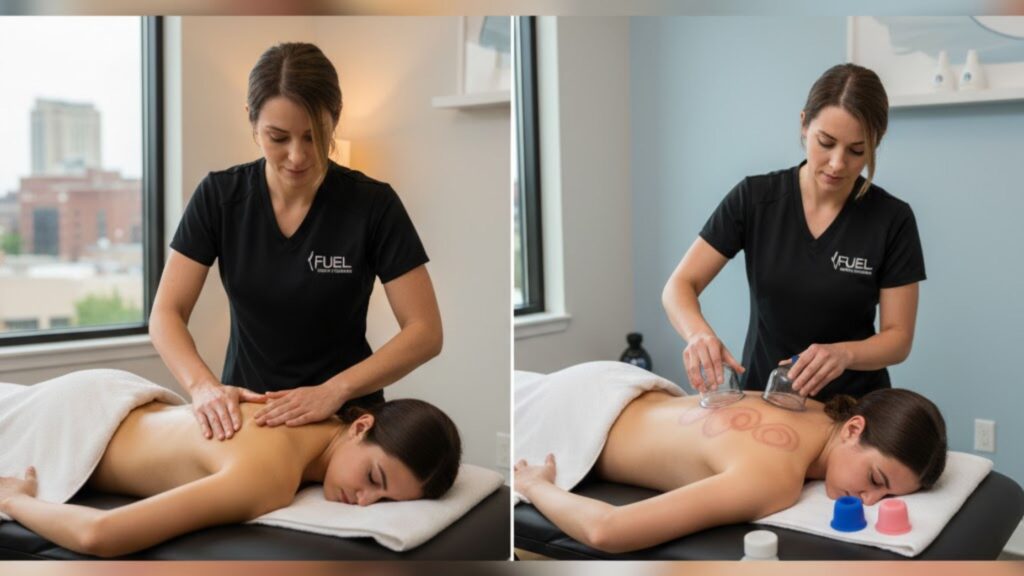Massage cupping and traditional massage are two complementary manual therapies used to relieve pain, improve mobility, and support recovery; the core difference is simple but clinically significant: cupping applies negative pressure (suction) to lift and decompress soft tissue, while traditional massage uses positive pressure (compression, shear, and stretch) to modulate muscle and fascia. This article explains how each approach works at the fascial and neuromuscular level, clarifies common techniques used in Grand Rapids clinics, and provides practical guidance for when to choose one therapy, the other, or a combined plan. Readers will learn the mechanisms behind fascial decompression versus manual compression, what sensations and aftereffects to expect, and how therapy choice varies for athletes, older adults, chronic pain, and post-injury rehabilitation. Along the way, we map specific conditions to recommended approaches, present comparison tables that clarify targeted tissue depth and session goals, and highlight how integrated care pathways—including physical therapy, assisted stretching, and complementary modalities—can optimize outcomes. Our goal is to help you make an informed decision about therapeutic cupping and traditional massage in Grand Rapids clinics while pointing toward local resources when an individualized plan is needed.
What Is Traditional Massage and Its Common Techniques?
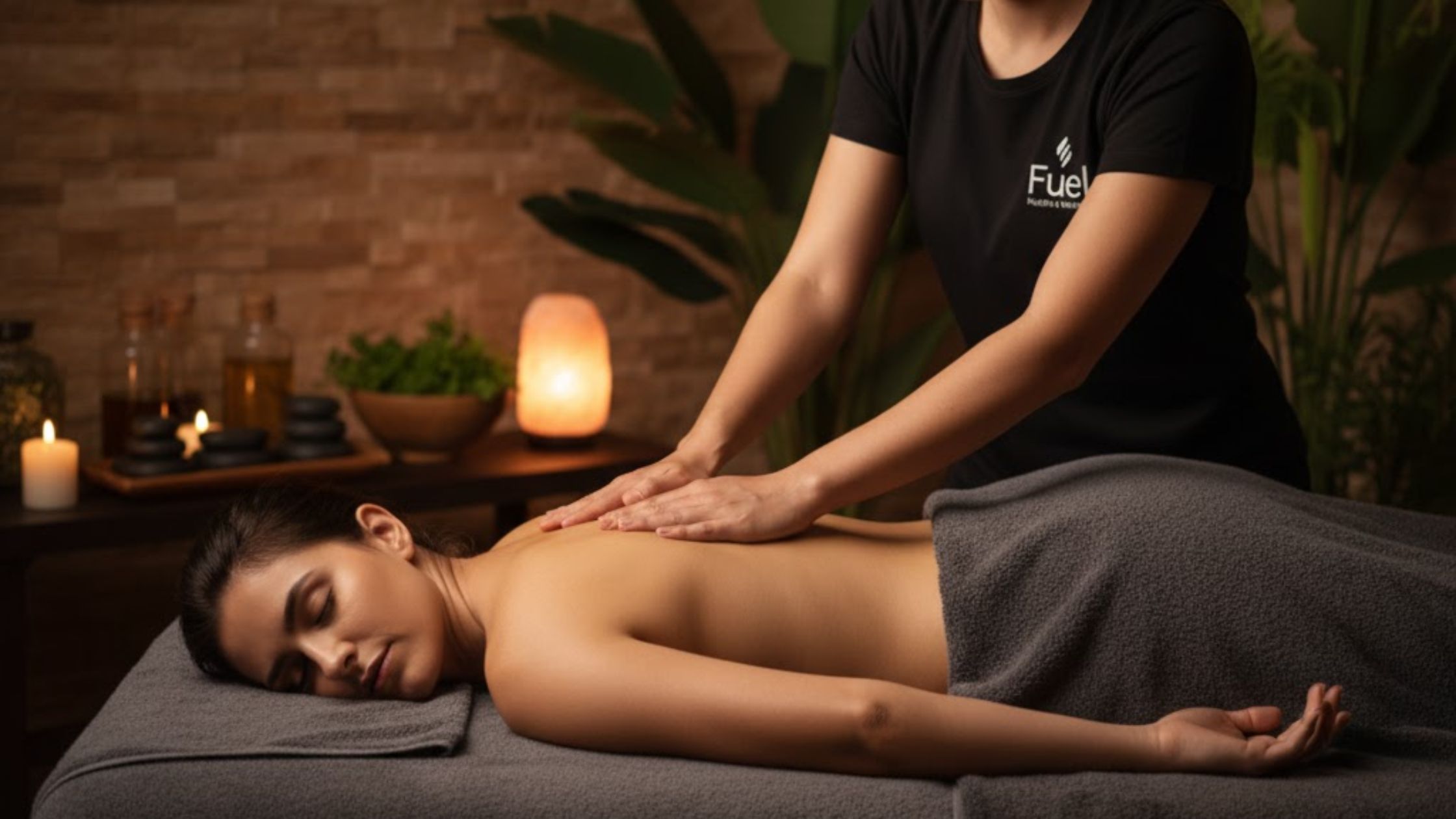
Traditional massage is a hands-on manual therapy that uses pressure, friction, and movement to influence muscles, fascia, circulation, and the nervous system; its mechanisms include mechanical deformation of tissue, increased local blood flow, and modulation of sympathetic nervous activity. Practitioners apply techniques such as effleurage, petrissage, friction, and ischemic compression to release trigger points, increase range of motion, and reduce pain through both local and central nervous system effects. Regular sessions can reduce muscle tone, improve tissue extensibility, and support relaxation by decreasing physiological arousal, which in turn can improve sleep and lower perceived pain levels. Understanding these mechanisms clarifies why massage is often used for stress reduction, chronic tension, and to complement rehabilitation programs that require improved soft-tissue pliability.
What Are the Main Types of Traditional Massage?
Traditional massage includes several core modalities, each with a specific technique emphasis and typical clinical application. Swedish massage focuses on long gliding strokes and gentle kneading for relaxation and general circulation enhancement, making it suitable for stress reduction and mild muscular tension. Deep tissue and trigger point therapies use slower, focused pressure and cross-fiber techniques to address adhesions, chronic tightness, and localized pain; these approaches are commonly used when manual release of deep fascia or muscle knots is required. Sports massage emphasizes recovery, pre- and post-event preparation, and mobility maintenance for athletes, often integrating stretching and neuromuscular techniques to support performance and reduce injury risk.
- Swedish massage improves circulation and relaxation after sedentary stress.
- Deep tissue massage targets adhesions and long-standing tightness for mobility gains.
- Sports massage combines manual therapy and stretching to support training and recovery.
These modality distinctions help you and your clinician select the best session focus for your functional goals and symptom profiles.
How Does Traditional Massage Provide Pain Relief and Relaxation?
Traditional massage reduces pain and promotes relaxation through a combination of mechanical, circulatory, and neurological effects that together lower nociceptive input and alter perception of pain. Mechanically, massage lengthens shortened muscle fibers and applies shear that can disrupt adhesions in fascia and muscle, while increased microcirculation improves nutrient delivery and metabolic waste removal. Neurologically, sustained pressure and rhythmic touch stimulate mechanoreceptors that modulate spinal and supraspinal pain pathways, producing analgesia and a shift toward parasympathetic regulation. These interacting mechanisms explain why massage can both acutely reduce soreness and support longer-term changes in tissue quality and movement patterns.
Which Conditions Benefit Most from Traditional Massage?
Traditional massage is widely indicated for conditions involving muscular tension, limited mobility, stress-related symptoms, and certain forms of chronic pain, with frequency and technique tailored to the clinical goal. Common scenarios that benefit include chronic neck and shoulder tension, low back stiffness, post-exercise muscle soreness, and clients seeking stress reduction and improved sleep; sessions range from single maintenance visits to recurring plans for chronic issues. For rehabilitation contexts, massage complements physical therapy by preparing tissues for active re-training and improving tolerance for mobility exercises. Clinicians typically recommend a short initial course (2–6 sessions) to assess responsiveness, then adjust frequency based on functional progress and symptom recurrence.
What Is Massage Cupping Therapy and How Does It Work?
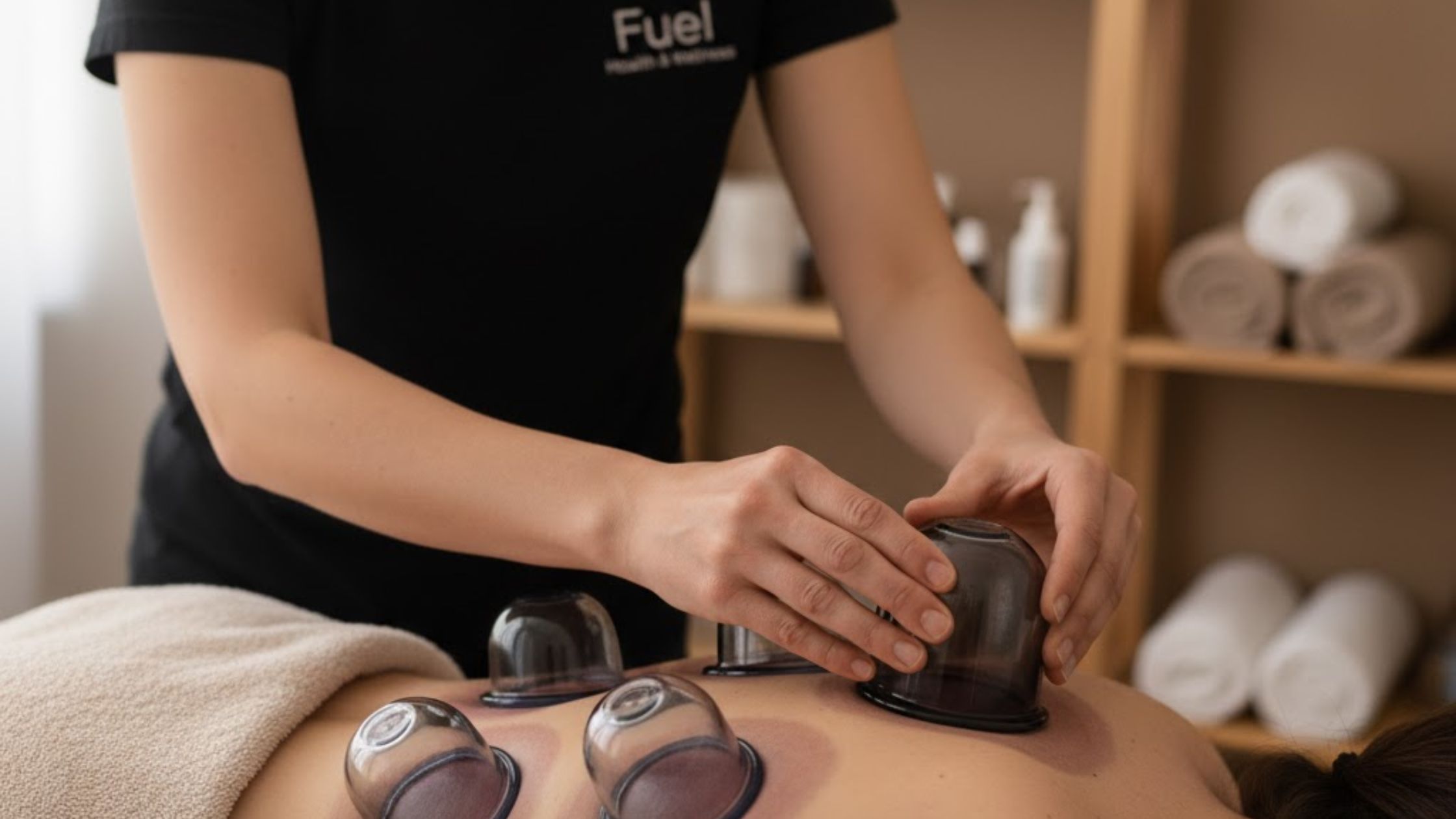
Massage cupping therapy uses suction cups to create negative pressure on the skin and superficial fascia, producing a mechanical lift that separates layers, enhances local perfusion, and stimulates lymphatic flow; this myofascial decompression changes tissue tension and sensory input, which can reduce pain and improve mobility. The suction effect deforms connective tissue, promoting transient increases in microcirculation and modulating mechanoreceptor signaling, which often leads to rapid reductions in tightness and increased range of motion. Recent clinical reviews describe cupping as a complementary modality that can accelerate fascial release when used alongside manual soft-tissue techniques and rehabilitative exercise. For clinics in Grand Rapids, cupping is typically integrated into multi-modal sessions that combine hands-on massage, assisted stretching, and functional movement work to amplify clinical gains.
What Are the Therapeutic Cupping Techniques Used in Grand Rapids?
Clinicians in the Grand Rapids area commonly employ several cupping techniques—dry static cupping, gliding (running) cupping with oil or lotion, pump-assisted variable suction, and pulsed or dynamic decompression—each selected to meet tissue quality and patient comfort. Dry static cupping is used for focal decompression and lymphatic stimulation, while gliding cupping combines suction with therapist-directed movement to treat broader fascial restrictions and improve glide between layers. Pump-assisted cups allow precise control of negative pressure for sensitive areas and progressive loading, and dynamic pulsed techniques can target deeper adhesions while minimizing skin marks. These options give clinicians flexibility to titrate mechanical effect and patient sensation across conditions.
This table summarizes key cupping techniques, their primary mechanisms, and expected clinical benefits.
| Technique | Mechanism | Clinical Effect |
|---|---|---|
| Dry static cupping | Sustained negative pressure | Local fascial lift, lymphatic drainage, focal pain relief |
| Gliding (running) cupping | Suction + therapist movement | Broad fascial mobilization, improved tissue glide |
| Pump-assisted cupping | Adjustable negative pressure | Controlled decompression for sensitive or acute areas |
| Dynamic/pulsed cupping | Repeated suction-release cycles | Targeted adhesion disruption with reduced skin stress |
Understanding technique choice helps us match cupping to your goals, and we often sequence cupping with manual work to maximize both decompression and neuromuscular re-education.
How Does Negative Pressure in Cupping Affect Fascia and Muscles?
Negative pressure in cupping creates a mechanical lift that separates superficial fascia from deeper layers, reducing adhesions and allowing restricted planes to rehydrate and glide more freely; this fascial decompression alters local mechanical stress and can restore functional sliding between connective tissue layers. The lift increases microvascular perfusion and capillary recruitment, which supports metabolic exchange and reduces localized ischemia that perpetuates pain. Neurologically, suction changes afferent input from the skin and fascia, which can reset pain signaling and improve motor unit recruitment patterns in nearby muscles. These combined effects explain why cupping often produces rapid improvements in range of motion and perceived tightness.
Myofascial Decompression (Cupping) vs. Self-Myofascial Release
Myofascial decompression (MFD), or cupping, and self-myofascial release (SMR) are common techniques utilized to treat soft tissue injuries and increase flexibility. MFD is a negative pressure soft tissue treatment technique using suction to manipulate the skin and underlying soft tissues. One method of SMR is a foam roller, where a patient rolls his/her bodyweight over a dense foam cylinder in a self-massaging fashion to mobilize soft tissues for the body part treated.
Acute outcomes of myofascial decompression (cupping therapy) compared to self-myofascial release on hamstring pathology after a single treatment, 2020
What Are the Key Benefits of Massage Cupping Therapy?
Massage cupping offers several clinically meaningful benefits that complement traditional manual therapy, particularly for fascial restriction, localized chronic pain, and recovery after intense exercise. Key benefits include reduced muscle tension through fascial lift, improved mobility by restoring inter-layer glide, enhanced local circulation and lymphatic drainage that support tissue health, and potential acceleration of recovery from delayed onset muscle soreness (DOMS). A targeted cupping session can produce measurable range-of-motion gains in a short period, which makes cupping a valuable adjunct when rapid functional improvements are needed.
- Reduced muscle tension through fascial decompression and adhesion release.
- Improved mobility and functional range of motion after targeted sessions.
- Enhanced recovery support and reduced DOMS through increased local circulation.
Collectively, these benefits explain why we often combine cupping with manual massage and active rehabilitation to reinforce lasting change.
What Are the Key Differences Between Massage Cupping Therapy and Traditional Massage?
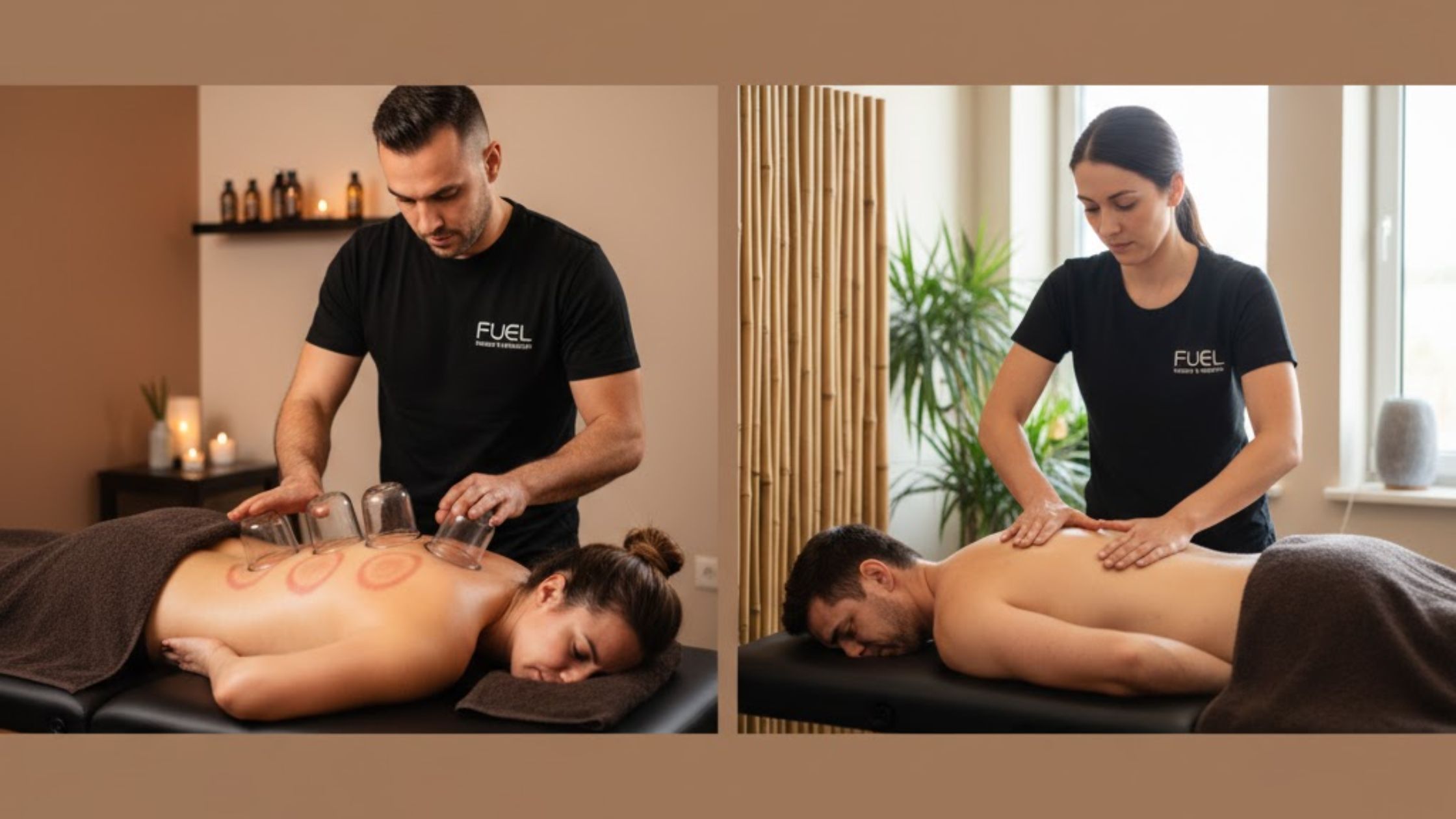
At a mechanistic level, cupping and traditional massage differ primarily by the direction of mechanical force—negative pressure that lifts and decompresses tissue versus positive pressure that compresses, shears, and stretches tissue—and these differences dictate sensation, aftereffects, and optimal clinical goals. Cupping often produces transient skin marks and a lifting sensation, with rapid improvements in mobility and focal decompression; traditional massage tends to create gradual softening, decreased resting muscle tone, and broad relaxation without the distinct suction marks. Tools differ as well: cups, pumps, and silicone devices for cupping versus hands, forearms, elbows, and table-based positioning for massage; session design and adjunct therapies vary accordingly. Appreciating these contrasts helps us choose the modality or combination that best matches your tissue targets and preferences.
How Do the Mechanisms of Action Differ: Negative Pressure vs. Positive Pressure?
Negative pressure lifts fascia and creates decompressive forces that separate tissue layers, whereas positive pressure compresses and shears tissues to elongate muscle fibers and break down adhesions via direct contact; both change mechanoreceptor input but through opposite mechanical vectors. Cupping’s suction increases local perfusion by recruiting microvasculature and stimulating lymphatic flow, which is particularly useful for stagnant areas and localized tightness. Massage’s compressive and shearing strokes directly manipulate muscle fibers and tendon insertions, promoting circulation and neuromuscular relaxation across broader zones. Clinically, the choice hinges on whether a lift-and-decompress strategy or a compress-and-shear approach better addresses your underlying tissue pathology and functional goals.
What Are the Differences in Sensation and Aftereffects?
Patients commonly report a distinct pulling, airy sensation during cupping and may see circular discoloration afterward that typically resolves within days; this is different from the heavier, kneading pressure of deep-tissue massage that usually yields transient soreness rather than skin marks. Cupping marks are related to capillary and subdermal blood redistribution and are generally benign, while massage soreness stems from mechanical loading of muscle tissue and metabolic byproducts. Aftercare differs accordingly: cupping patients often benefit from gentle movement and hydration, whereas massage clients may use active recovery, stretching, or heat to alleviate post-treatment soreness. Setting clear expectations is key in both therapies to prevent surprise and to optimize adherence.
How Do Tools and Techniques Vary Between the Two Therapies?
Cupping relies on silicone or glass cups, vacuum pumps, and lubricant for gliding techniques, allowing therapists to modulate suction and treat focal adhesions with minimal skin friction; traditional massage uses hands, forearms, elbows, and sometimes tools like massage sticks to deliver pressure, shear, and stretch. Combination sessions blend tools—applying cups to decompress a region, then using manual strokes to refine tissue alignment and neuromuscular control. Each toolset has pros and cons: cups can rapidly change tissue tension without deep manual force, while hands-on work allows tactile feedback and nuanced pressure adjustments. We integrate tools strategically to sequence decompression and active re-education for durable change.
This comparison table condenses the main contrasts between cupping and traditional massage for quick clinical reference.
| Element Compared | Cupping Therapy | Traditional Massage |
|---|---|---|
| Primary force | Negative pressure (suction) | Positive pressure (compression/shear) |
| Typical sensation | Pulling/lifting; possible marks | Kneading, deep pressure, transient soreness |
| Tools used | Silicone/glass cups, pumps | Hands, forearms, elbows, manual instruments |
| Aftereffects | Marks, immediate mobility gains | Soreness, gradual relaxation |
| Clinical goal | Fascial decompression, focal release | Muscle lengthening, relaxation, trigger point work |
What Are the Primary Goals and Targeted Tissue Depths?
Cupping generally focuses on superficial to mid-depth fascia and connective tissue layers, aiming to restore glide and reduce adhesions, while traditional massage targets superficial to deep muscle fibers and their myofascial interfaces for tone reduction and trigger point release. Session goals may overlap—both aim to reduce pain and improve function—but the primary emphasis shifts: cupping excels at localized fascial lift and lymphatic stimulation, whereas massage excels at muscle lengthening, neuromuscular recalibration, and systemic relaxation. Our clinical plans often mix both approaches to address layered dysfunction: cupping to free fascial planes followed by massage to recondition muscle behavior and movement quality.
When Should You Choose Massage Cupping Therapy, Traditional Massage, or Both?

Choosing between cupping, traditional massage, or a combined approach depends on the condition, treatment goals, tissue quality, and patient tolerance; assessment-driven decision-making ensures the chosen modality aligns with rehabilitation or wellness objectives. For focal fascial adhesions, limited range of motion, or post-exercise recovery needs, cupping can provide rapid decompression and perfusion benefits. For systemic tension, stress-related symptoms, or neuromuscular re-education, traditional massage provides gradual, controllable pressure and broad relaxation. Combining modalities—starting with cupping to unlock fascial restrictions and following with targeted massage and active movement—often yields stronger functional gains than either modality alone.
Which Therapy Is Best for Pain Relief and Injury Recovery?
For acute injuries, clinicians often prioritize conservative protocols that limit excessive tissue stress; gentle pump-assisted cupping can reduce localized congestion and pain while minimizing direct compressive loading, and targeted manual therapy supports neuromuscular retraining as healing progresses. In chronic pain, both cupping and massage have evidence for symptom relief: cupping can be especially helpful when fascial tightness maintains pain, whereas massage suits cases where muscle hypertonicity and trigger points predominate. A combined pathway—assessment, staged decompression, then progressive loading through exercise—ties manual work to functional recovery and reduces the risk of recurrence.
This table maps common conditions to recommended therapies and a brief rationale to aid decision-making.
| Condition / Goal | Recommended Therapy | Why / Notes |
|---|---|---|
| Chronic low back tightness | Combination: cupping + massage + PT | Decompress adhesions then re-train movement |
| DOMS after intense exercise | Cupping (gliding) + manual massage | Increases circulation and accelerates recovery |
| Stress-related tension | Traditional massage | Broad relaxation and nervous system modulation |
| Adhesive fascial restrictions | Focused cupping techniques | Targeted fascial lift and improved glide |
Our assessment and clinician judgment determine sequencing and frequency to maximize outcomes.
How Do Athletes Benefit from Combining Cupping and Massage?
Athletes gain performance and recovery advantages by using cupping to quickly reduce fascial restriction and improve range-of-motion, then using massage and assisted stretching to normalize muscle tone and movement patterns; timing is important, with cupping often used post-event for recovery or pre-event sparingly for mobility gains. Short-format cupping sessions can reduce DOMS and shorten return-to-training windows, while massage enhances circulation and promotes relaxation in taper phases. Integration with assisted stretching and red light therapy can further support tissue repair and cellular recovery, creating a multimodal strategy that addresses both structural and metabolic recovery needs.
What Role Does Personalization Play in Selecting the Right Therapy?
Personalization is central: intake evaluation, movement assessment, tissue palpation, and patient preference guide whether a clinician selects cupping, massage, or a combined plan; factors such as skin sensitivity, anticoagulant use, and prior responses are essential considerations. We use assessment-driven criteria to select techniques and titrate intensity, and you can expect coordinated communication across disciplines focused on functional improvement. Shared decision-making improves adherence and outcomes, and clinicians typically schedule a follow-up to reassess and refine modality mix, ensuring the chosen approach remains aligned with recovery trajectories and performance goals. For readers interested in individualized plans, Fuel Health & Wellness offers assessment-driven pathways tailored to each client’s needs and circumstances.
Why Choose Fuel Health & Wellness for Massage Cupping and Traditional Massage in Grand Rapids?
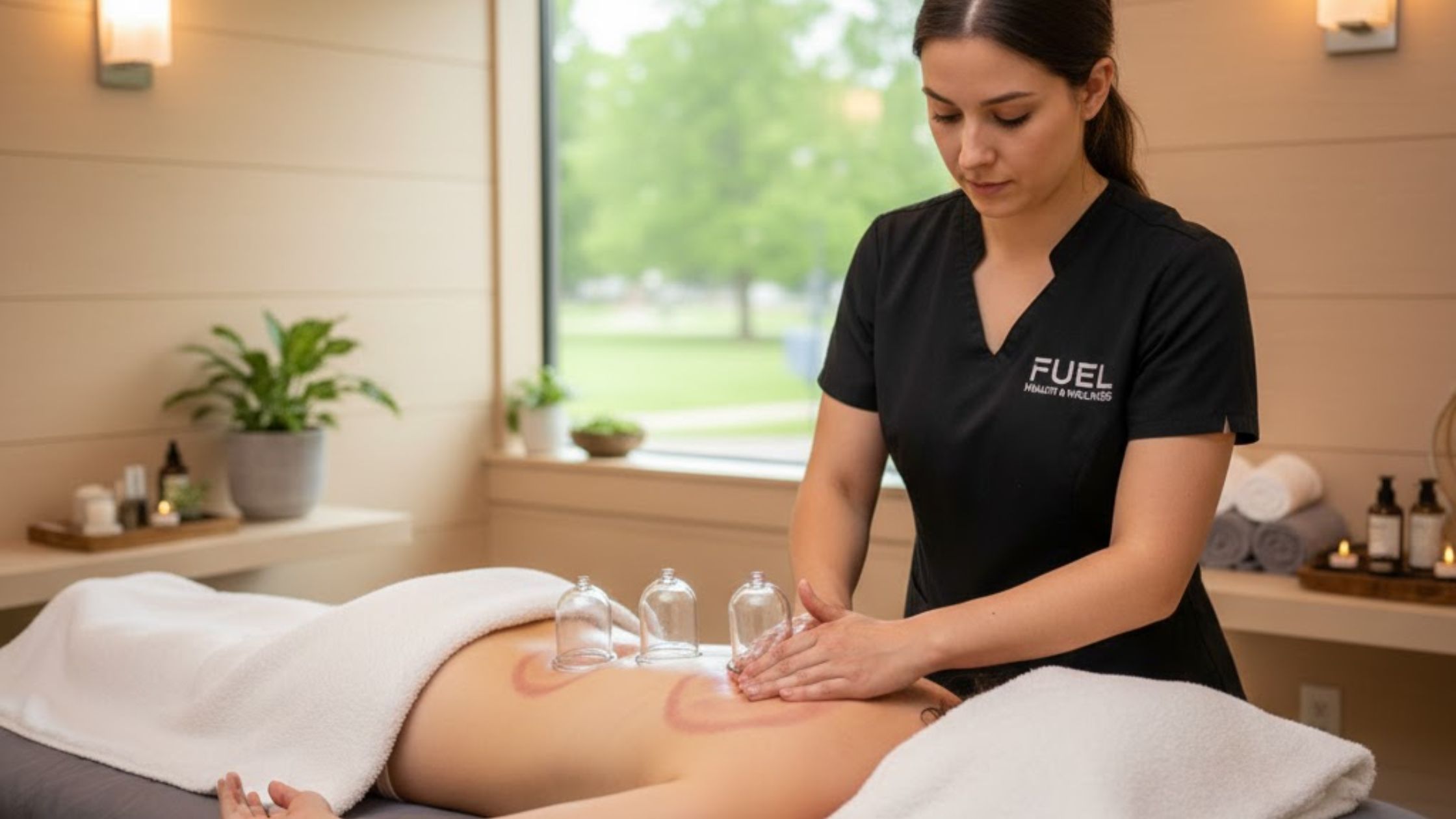
Fuel Health & Wellness (also known as Fuel Physical Therapy & Sports Performance) positions its services around an integrated, holistic model that combines physical therapy, assisted stretching, red light therapy, massage and cupping, and supportive services like weight loss and nutrition and neuropathy pain relief to address multiple drivers of pain and dysfunction. The clinic emphasizes personalized treatment plans created from thorough assessments to align manual therapies with functional goals and rehabilitation stages. Fuel’s local presence in Grand Rapids and Grandville enables coordinated care across modalities, and the practice highlights an expert team of certified professionals who collaborate to create multidisciplinary strategies for recovery and performance.
What Makes Fuel’s Holistic Approach to Massage and Cupping Unique?
Fuel’s holistic approach links manual therapies to objective movement work and adjunctive modalities, using cupping and massage as part of a broader pathway that may include assisted stretching and red light therapy to potentiate tissue repair and mobility gains. This integration reduces siloed care by ensuring that decompression from cupping is reinforced with active re-training and metabolic support where appropriate. Patients benefit when clinicians coordinate timing, progression, and home strategies, enabling more durable outcomes than stand-alone sessions. The practical advantage is a cohesive plan that addresses tissue quality, movement patterns, and lifestyle contributors to pain.
Who Are the Certified Therapists Providing These Services?
Fuel Health & Wellness emphasizes an expert team of certified professionals, including licensed physical therapists and trained manual therapy providers, who collaborate to deliver individualized care plans that integrate cupping, massage, and rehabilitation. We use assessment-driven criteria to select techniques and titrate intensity, and you can expect coordinated communication across disciplines focused on functional improvement. Dr. Eric Broadworth is listed among the clinic contacts and is part of the care team that contributes to the clinic’s multidisciplinary approach. This structure supports continuity of care from initial evaluation through progress checks and plan adjustments.
How Can You Schedule a Personalized Massage or Cupping Session?
To begin a personalized plan, patients typically start with an evaluation that identifies tissue restrictions, movement limitations, and recovery goals so therapists can recommend cupping, massage, or a combination tailored to needs. Fuel Health & Wellness encourages prospective clients to schedule an evaluation to review options and create a treatment sequence that aligns with functional priorities. During the first visit, expect a focused intake, movement testing, and a clear explanation of recommended modalities with proposed session frequency and outcome goals.
Frequently Asked Questions
What Should I Expect During a Cupping Session?
During a cupping session, you can expect the therapist to apply suction cups to specific areas of your body. The process typically begins with a discussion about your goals and any areas of concern. The therapist may use oil for gliding cupping or apply static cups for targeted decompression. You might feel a pulling sensation, and while some may experience temporary marks, these are generally harmless. Sessions usually last between 30 to 60 minutes, depending on the treatment plan and areas being addressed.
How Often Should I Schedule Cupping or Massage Sessions?
The frequency of cupping or massage sessions depends on individual needs, treatment goals, and the severity of your condition. For acute issues, sessions may be scheduled 1-2 times per week, while chronic conditions might benefit from more frequent visits initially, tapering off as improvements are noted. It’s essential to consult with your therapist to develop a personalized plan that aligns with your recovery objectives and lifestyle, ensuring optimal results over time.
Can I Use Cupping Therapy If I Have Sensitive Skin?
Yes, individuals with sensitive skin can still benefit from cupping therapy, but it’s crucial to communicate this to your therapist. They can adjust the suction intensity and technique to minimize discomfort and reduce the risk of bruising. Using pump-assisted cupping or gliding techniques can also help accommodate sensitive skin. Always inform your therapist about any skin conditions or sensitivities during your initial assessment to ensure a safe and effective treatment experience.
Is Cupping Therapy Safe for Everyone?
While cupping therapy is generally safe, it may not be suitable for everyone. Individuals with certain conditions, such as open wounds, active infections, or bleeding disorders, should avoid cupping. Pregnant women and those with specific cardiovascular issues should also consult their healthcare provider before undergoing treatment. A thorough assessment by a qualified therapist can help determine if cupping is appropriate for you, ensuring safety and effectiveness in your treatment plan.
How Can I Prepare for My First Cupping or Massage Session?
To prepare for your first cupping or massage session, arrive hydrated and avoid heavy meals right before your appointment. Wear comfortable clothing that allows easy access to the treatment areas. It’s also helpful to have a list of any medications you’re taking and to discuss any medical conditions or concerns with your therapist. This information will assist them in tailoring the session to your specific needs and ensuring a positive experience.
What Should I Do After a Cupping or Massage Session?
After a cupping or massage session, it’s important to hydrate well to support recovery and flush out any toxins released during treatment. Gentle movement can help maintain the benefits of the session, but avoid strenuous activities immediately afterward. If you experience any soreness, applying heat or taking a warm bath can be soothing. Always follow any specific aftercare instructions provided by your therapist to maximize the benefits of your treatment.
Does Massage Cupping Leave Marks and Are They Harmful?
Cupping can produce circular, bruise-like marks caused by capillary dilation and minor subdermal blood redistribution; these marks (ecchymoses) are generally benign and resolve over several days to two weeks depending on individual circulation. Marks are a normal aftereffect of negative pressure and are not a sign of tissue damage when applied correctly by a trained clinician, although they can be more pronounced in those with fragile skin or on anticoagulant therapy. If marks are accompanied by prolonged pain, spreading redness, or systemic symptoms, patients should consult their clinician for evaluation. Proper communication about expected aftereffects can reduce anxiety and improve adherence to follow-up care.
Can Massage Cupping and Traditional Massage Be Used Together Safely?
Yes—when sequenced appropriately and guided by a clinician—cupping and traditional massage can be used together safely to maximize fascial release and neuromuscular reconditioning; typical sequencing applies cupping first to free inter-layer restrictions, followed by targeted manual work and active movement. Therapists monitor skin response, tissue tolerance, and patient feedback to avoid overloading sensitive areas, and they may space sessions to allow tissue recovery if intense techniques are used. Contraindications and patient-specific factors dictate safe combination strategies, so assessment-driven planning ensures both efficacy and safety. Clear communication about timing and expected sensations helps patients participate confidently in combined protocols.
How Long Are Typical Sessions for Each Therapy?
Session lengths vary by goal and clinic protocols, with common ranges including 30-minute focused treatments, 45–60-minute comprehensive sessions, and 75–90-minute integrated appointments that combine assessment, cupping, manual therapy, and movement training. Cupping-only sessions are often shorter when applied to focal issues, while combined sessions that incorporate traditional massage and exercise instruction will be longer to accommodate assessment and active components. We tailor time to your treatment plan, so initial evaluations may require additional time for a thorough assessment and education. Frequency and duration depend on the severity of dysfunction and the progression of functional improvements.
Are There Any Contraindications for Massage Cupping or Traditional Massage?
Both modalities have important contraindications that clinicians screen for during intake; common cautions include open skin wounds, active infection, uncontrolled bleeding disorders, and recent major surgery, and some medications (e.g., systemic anticoagulants) may raise concern for cupping marks or bruising. For massage, acute fractures, severe osteoporosis, and certain cardiovascular instabilities require medical clearance before hands-on work. We use conservative modification strategies or choose alternative modalities when contraindications are present, always prioritizing your safety and medical coordination if needed. When in doubt, our clinician-led assessment clarifies suitability and safe adjustments.
- Avoid cupping over open wounds or sites with active skin infection.
- Modify or defer manual pressure when major vascular or bleeding risks exist.
- Seek medical clearance after recent surgery or when systemic conditions are present.
Conclusion
Choosing between massage cupping therapy and traditional massage can significantly enhance your recovery and overall well-being. Each modality offers unique benefits, from fascial decompression and improved mobility to relaxation and pain relief, tailored to your specific needs. By understanding these therapies, you can make informed decisions that align with your health goals. Schedule an evaluation with our expert team at Fuel Health & Wellness to explore the best options for your personalized treatment plan today.
